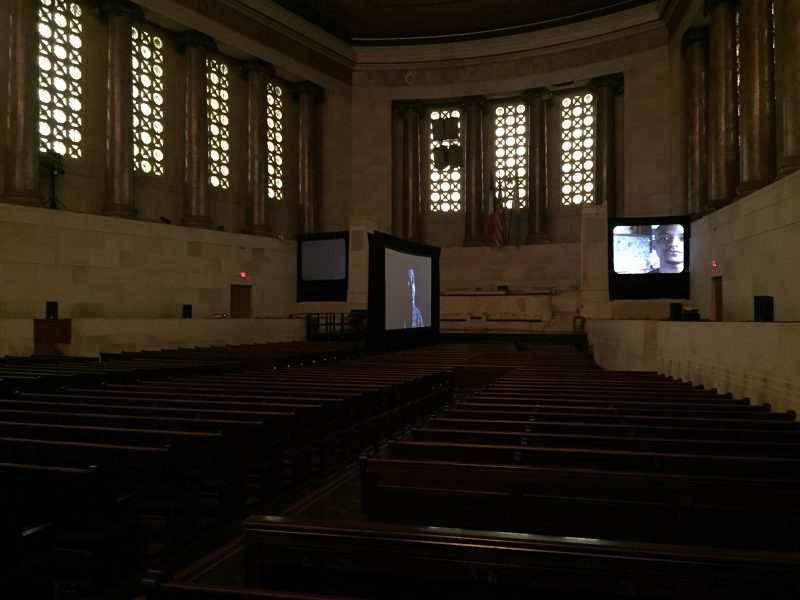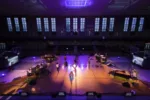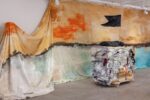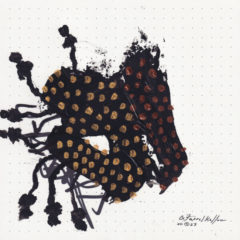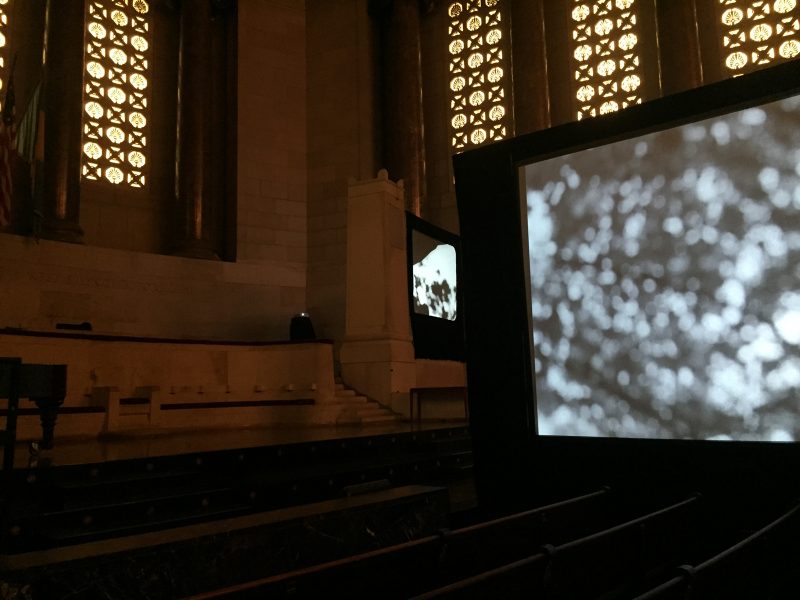
It is rare that I leave an art experience without having created a rather wordy record of the affair. Normally, when I go see art, I am prepared with notebook in hand–looking intensely, then scribbling, studying and marking, over and over. However, when it does happen that I leave without many scrawled pages, I find that it is for one of two reasons: complete lack of care for what I am looking at, or full absorption. In the case of Back and Song, Bradford Young and Elissa Blount Moorhead’s current installation at the chapel at Girard College, it was most certainly the latter.
Back and Song is a four-channel video installation with sound, that ruminates on Black caregivers/ healers and their place in Western medicine. During my visit, I found the chapel empty except for a few other watchers, leaving me without inhibition to roam the space–moving from pew to pew to experience the installation from different vantage points. The screens are set up like a T: two facing the entry doors to the space; and two back-to-back, facing opposite side walls. This orientation makes it impossible to see more than three screens at a time. The center screens feature faces of Black individuals, or patterns of light; while the outer screens rotate through various contemporary and archival footage: dancing, childbirth, testimonials about meditation, medicine men. Almost all of the footage is in black and white, with just momentary flashes of color. There are sections of silence and slowness, and moments where the music and footage are so high-energy that it is anxiety-inducing: a feeling that seems dissonant with the serene setting of the installation. I found myself wanting to face the screens at all times: to back away and side-step through the pews, as though before a queen. During my visit, I continued to face them all but once, when I lay down across a pew, letting the sound wash over me, unable even out of my peripheral vision to have any clue what was going on on-screen(s). It was an impulse-turned-meditation, as I contemplated the high, decorative ceiling, and the concept of vulnerability that both patients and healers must face.
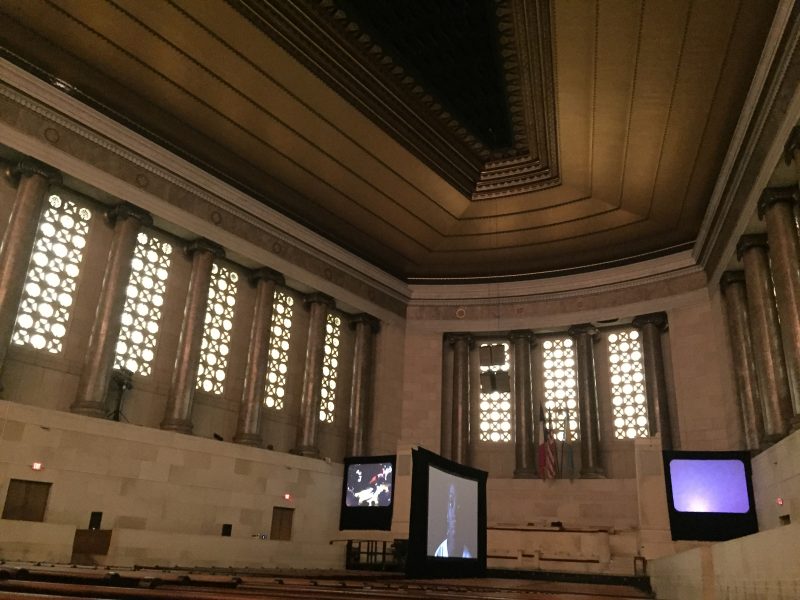
Young and Moorhead’s project is about “the complex and profound connections between health, wellness, and the Black experience in America.” This is a philosophical and broad topic to explore: one that is exhilarating, and potentially exhausting. How amazing, then, that these two artists have created a work that walks the line between challenging and comforting so exquisitely. At the loudest moments the sound almost seems to split across the two speakers, becoming warped and difficult to understand, but still reverberating through the pews and into your back. In the moments of rest, little circular lights flash on the screen, or scenes of water appear – as though you are looking down into a darkened pool. You are baptized, forgiven, welcomed. You are, at times, perhaps even ignored, as the four videos seem to communicate between themselves: central portraits looking out, flank videos flashing with little care for the viewer’s ability to digest the dancing or speaking that they are witnessing. We are invited to witness a childbirth in silence, to watch bodies flail and bodies rest, to observe without interfering, possibly without understanding, and to accept what we are seeing as something true and important.
Though many filmmakers and artists come to mind when experiencing Back and Song, the largest is Arthur Jafa, with whom Moorhead works. Moorhead and Young, like Jafa, also consider the contemporary Black experience through the use of archival and new footage. Here they consider where traditional medicine fits in with Western notions of healing. What does it look like to let a medicine man lay hands on you? How does it feel to witness a midwife usher in new life to the world? How can we empathize with a prisoner talking about how meditation has impacted his life? So too do these artists play with location: what does it mean to show this project in a school that was originally opened for “poor white orphan boys,” and remained closed to black students until 1968, and all girls until 1984?
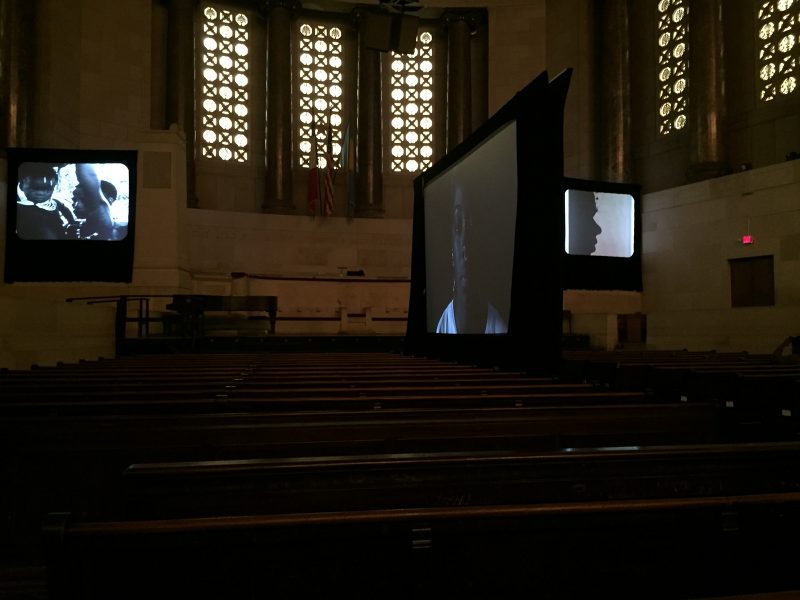
These questions do not have easy answers, nor should they. Back and Song in some ways acts like a pick-axe: busting open an ordinary-looking rock to discover gems inside. These gems–the questions that Moorhead and Young leave their viewers with–boil down to questions of humanity. They beg us to think about our positionality as viewers, and as humans, and to remain open and empathetic to the experiences of others: whether that be in the health field or beyond. By watching, our own backs are made heavier by the weight of knowledge, but we are lifted with the songs that accompany the video, and the songs of our peers’ movements through the chapel. This work is essentially site-specific, as the emotional labor that it does, and in turn asks us to do, is made more powerful by its location. To witness this work in a spiritual space of a historically white and male institution is to make steps toward healing a historical injustice. When we, the viewers, exit the space, our location changes, but we bring the work with us, continuing the work that this art asks us to do. As this installation goes on to tour other cities across the US, its web will grow, and with it will come new human connections, in addition to those essential relations that the artists explore between the historical legacies of race and health.
Back and Song: Elissa Blount Moorhead & Bradford Young, Girard College, October 5 – 27, 2019
